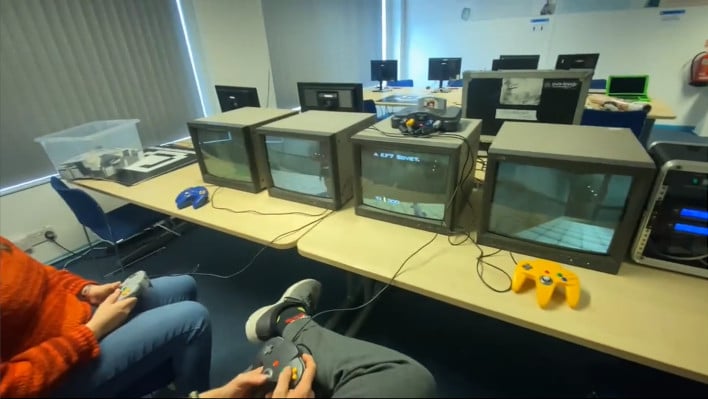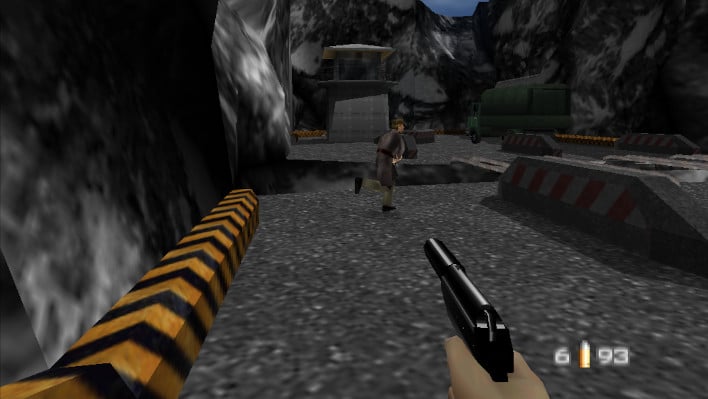Computing History Museum Solves N64 GoldenEye's Screen Cheating Issue With $10K In Hardware

Cheating in games was not a new phenomenon when Goldeneye 64 was released in 1997. Many developers worked in cheats as ways to debug their games and make certain sections easier, such as the ubiquitous Konomi code. What was new was the first-person-view local multiplayer, and with that came a new way to cheat—taking a peek at your opponent's sectioned off part of the screen to glean their location to gain an advantage. You might even call this a precursor to wall-hacks, as they utilize the same result by concept, which is to gain information about enemy locations when previously there was none.
4 screen GoldenEye on the original N64 hardware! No screencheating here! …but how?
— Computing History (@computermuseum) May 4, 2022
Come and experience this at our GoldenEye evening, celebrating 25 years of GoldenEye for Nintendo 64: https://t.co/F918hEQ20v pic.twitter.com/05jA82upb8
A simple, yet elegant solution to a very old problem. From the short video posted by the museum, it's not hard to tell that it utilized a radio frequency (RF) splitter that supports signal scaling. If you don't know what that means, it's basically just a way to live-split an image and then scale it so it fits.
The main purpose of these types of equipment are usually for shop displays, like TV walls, and they often were used in older displays at stadiums as well. Because of their niche market, it makes them rather pricey. For an event that allows people to come in and play the game without fear of their neighbor cheating on them, it's fantastic. The CEO of the Computing Museum, Jason Fitzpatrick, stated that it cost around 8,000 GBP in equipment, converted today to US is about $9,800.

Goldeneye 64 Screenshot from level Dam

